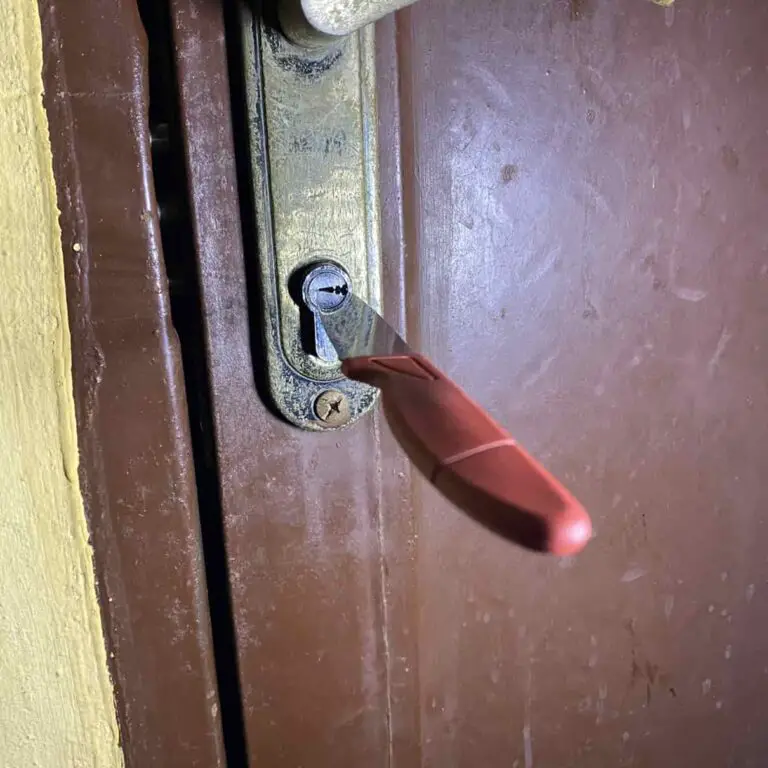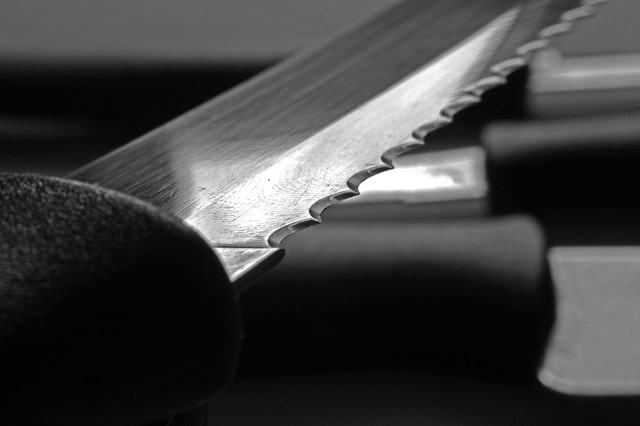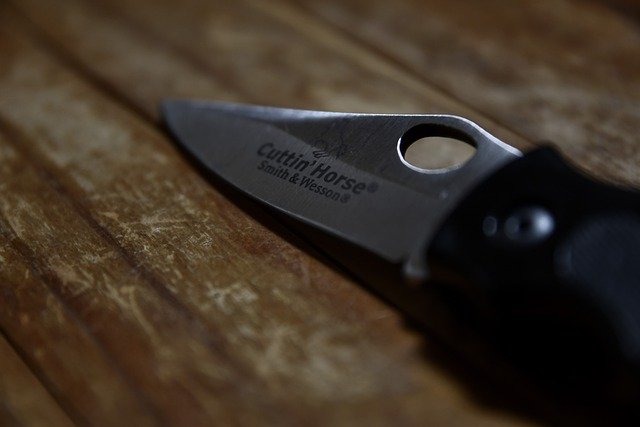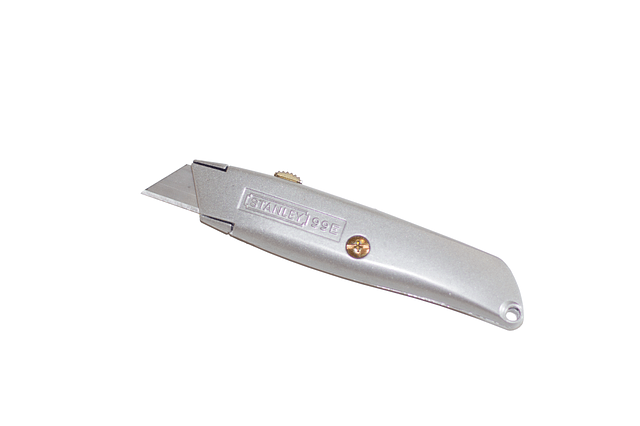Sharpening your knives with a whetstone is one of the best ways to get that blade back to winning ways very fast, and I have talked about how to do so extensively here. However, before you even start sliding the knife’s blade on the whetstone’s surface at all, there are some things you need to know.
For example, how long do you soak a whetstone for before using it to sharpen your knives?
A whetstone should be soaked for between 5-10 minutes before use to limit the friction between the knife and the surface. The soaking should be done in water, and more water should be added to the surface of the whetstone during the sharpening process.
Find out more about why you should soak a whetstone and how to do it the right way below.
Table of Contents
Why Do You Need to Soak A Whetstone at All?
If you don’t want to damage your knife, or the stone itself, it is best to soak it.
Soaking the whetstone before use forms a slurry on the face of the stone which reduces wear from friction and carries the tiny metal shavings from sharpening away from the surface of the blade.
Likewise, soaking the whetstone helps to decrease the heat transfer that would have occurred between the dry knife and stone surface, keeping both materials safe.
Can You Soak A Whetstone Too Long?
There is nothing like soaking a whetstone too long, although I don’t recommend leaving it in the water for more than enough time.
In the guide to sharpening your knives on a whetstone, I mentioned that there are different grit levels to whetstones and they are used for different stages of the sharpening.
Thus, you can soak coarse whetstones for longer than you would soak medium-grit levels, and in turn have the lowest grit levels be the ones you soak for the least time.
No matter how long you soak the whetstone for, though, it is still recommended that you add some water to the surface when sharpening to ensure smoothness of the operation, form and eliminate burrs better and prevent friction from ruining the process too.
How Long Does It Take to Use A Whetstone?
Now, this is dependent on you and the kind of work you are doing on the knife.
If you are simply sharpening a well-used and maintained knife, including being honed as at when necessary, you don’t have to spend more than 10-15 minutes on the entire thing. For restoring the edge to a completely dull knife or changing the angle on the knife, you might spend up to 30 minutes or more trying to make sure all edges are fine.
For people like me who like to take their time, though, the simplest operations can take up to 20 minutes. Don’t blame me. I just love to spend quality time with good blades when I can.
Do You Soak A Whetstone in Water?
Yes, water. Some users swear by the benefits of using mineral oil on their whetstone. I’m sure it works for them, but I cannot recommend what I don’t know about to you.
If mineral oil is the way to go for you, that’s no problem. I prefer to stick with water, though, as it has never failed me before.
Do You Soak A Whetstone in Warm or Cold Water?
I don’t see any reason to stress the whetstone by soaking it in warm water.
Whetstones should be soaked in clean, cold water for about 5-10 minutes before they are used to sharpen your knives. Warm water could be damaging to the grits on the surface of the whetstone, causing them to wear away faster which means less durability on the whetstone.
Should All Whetstones Be Soaked?
Some whetstones do not need to be soaked at all before use. Yes, you heard that right. I think the slang for these kinds of stones is ‘splash and goes’ or something.
A good example of these is the Shapton stones. In fact, these just need to be soaked for 5-10 minutes for the very first time you use them and never again. Some users even claim to ignore that piece of instruction and simply skip ahead to using the stones.

You can just get them out of the box, splash some water on them and they start working.
Most of such whetstones have a glazed surface so they will not absorb the water when you soak them. Likewise, though, the majority of the poorly made whetstones on the market do not soak up water either. That makes it challenging to know whether it is truly the ‘splash and goes’ type, or you have a poor whetstone on your hands.
So, what I do to counter that is stick with the good whetstones from well-known brands.
What If Your Whetstone Is Not Staying Wet?
This is more of the reason why I recommend splashing some water on top of the whetstone as you use it, even after soaking.
However, I have seen some extreme cases from users where their whetstone doesn’t seem to hold the moisture even after it has been soaking for up to 2 days.
First things first, I don’t know why you are abusing the whetstone by soaking it for that long. If it’s not holding moisture, though, try these:
- Flatten the surface of the whetstone by rubbing another stone against it, especially if new. The glazed surface of a new whetstone might make it impossible to hold moisture
- Don’t place your whetstone on a towel when using it. It is believed that some whetstones will seep the moisture in them to the towel which keeps absorbing everything that has gone into the whetstone.
- Check to see if you got the real deal. Like I discussed above, cheap whetstones won’t behave like the original thing.
- Ensure you have the common kinds of whetstones which need soaking before use.
I hope any of the pointers above work for you.
Are Whetstones the Only Way to Sharpen Your Knives?
No, not by a long shot. While sharpening your knife on the whetstone is what I’d recommend any day, there are alternative sharpening methods you can explore also.
Likewise, I have touched up on some specific cases for knife sharpening if you ever find yourself without a whetstone. Some of these are:
- How to sharpen your knives with a rock;
- How to sharpen your knife with another knife;
- Can you sharpen a knife with a Lansky puck?
Go through those guides to see the world of sharpening that lies in front of you, but don’t make it a habit to stick to those methods.

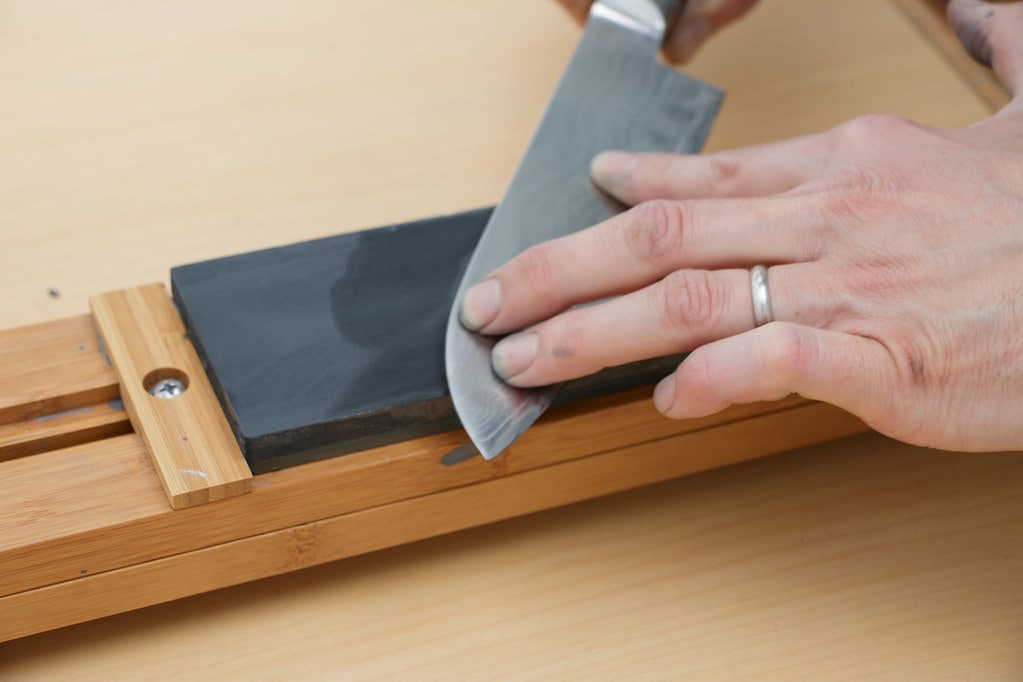
![[Video] The Complete Whetstone Sharpening Guide for Beginners](https://cutsandcarves.com/wp-content/uploads/2021/05/Video-The-Complete-Whetstone-Sharpening-Guide-for-Beginners-768x644.jpg)

